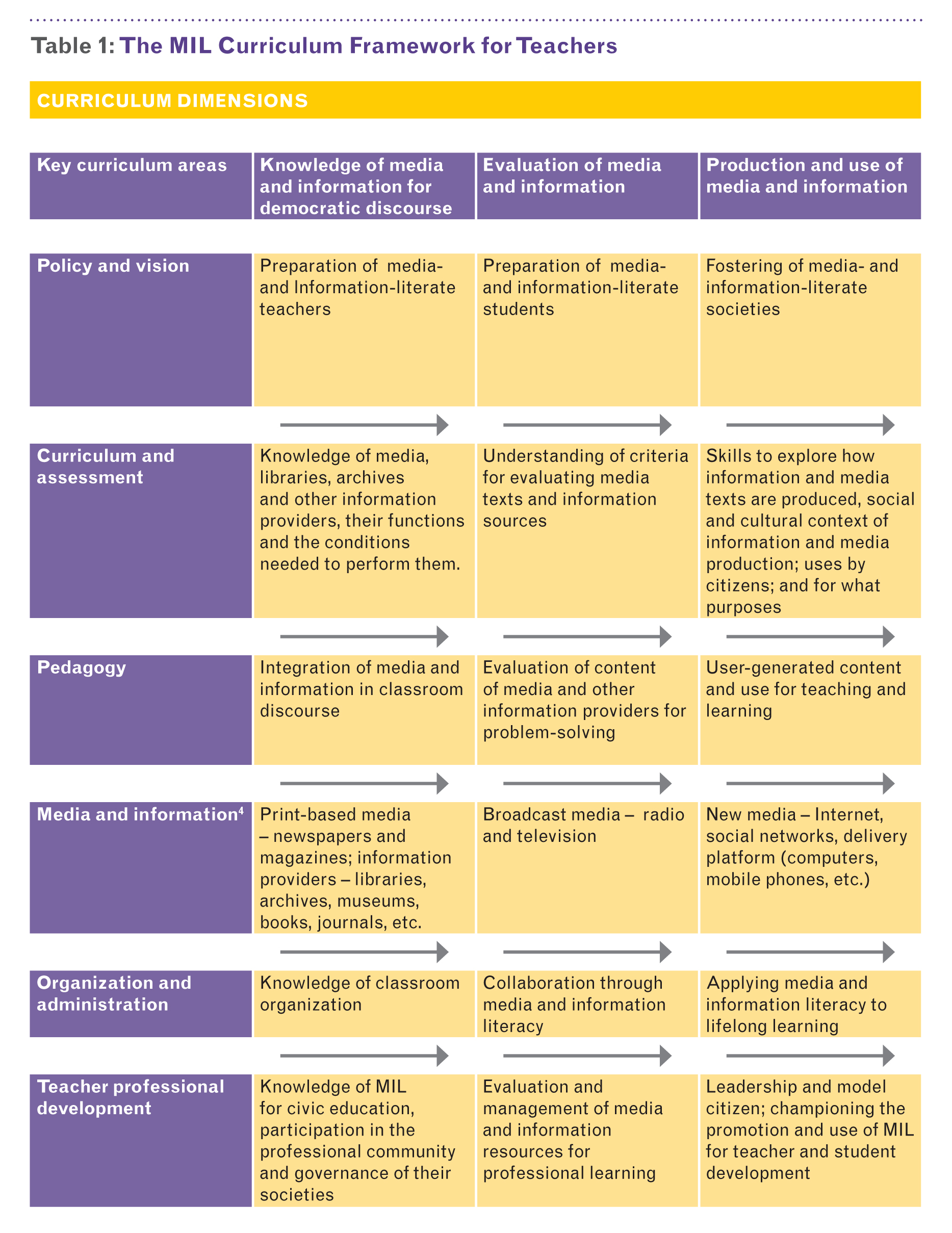Based on the recommendations of the UNESCO expert group on MIL3 and the modules developed in the curriculum to accompany the framework, three key interrelated thematic areas have been delineated as the broad curriculum areas under which the MIL curriculum for teachers is framed. They are:
- Knowledge and understanding of media and information for democratic discourses and social participation.
- Evaluation of media texts and information sources.
- Production and use of media and information.
These have been linked with six key areas of general education and teacher development to depict their progressive relationship and create a curriculum framework for the UNESCO MIL Curriculum Framework for Teachers (see Table 1).
The MIL curriculum framework and accompanying curriculum modules are non-prescriptive so as to facilitate their adaptation to global, regional and national strategies. (See the Adaptation Process and Integration Strategies sections of the Introduction to Part 2 of the MIL Curriculum for more information.) They should be flexible enough to be adapted to fit different educational and institutional systems and tailored to local needs. However, UNESCO considers that any useful exposure of teachers to MIL should necessarily include elements which emphasize the fundamental freedoms as outlined in Article 19 of the Universal Declaration of Human Rights. In whatever adapted form, the MIL curriculum should help develop teachers’ understanding of the importance of these fundamental freedoms and rights as an integral part of civic education, first in the classroom environment and also in the local and global environments.
The MIL curriculum is relevant in print and audiovisual environments including newspapers, books, broadcast media such as radio and television, and in online news media and other information providers. Thus, the training of MIL teachers should not be seen as reserved only for those with access to advanced technologies. It is equally applicable in contexts where use of advanced technologies is limited.


